Chasing Puffins in the Fog: A Lesson in Letting Go
Six months of planning led me to a fog‑shrouded island and a day that didn’t go as planned. This is the story of finding beauty in the unexpected — and the shots I almost left behind.
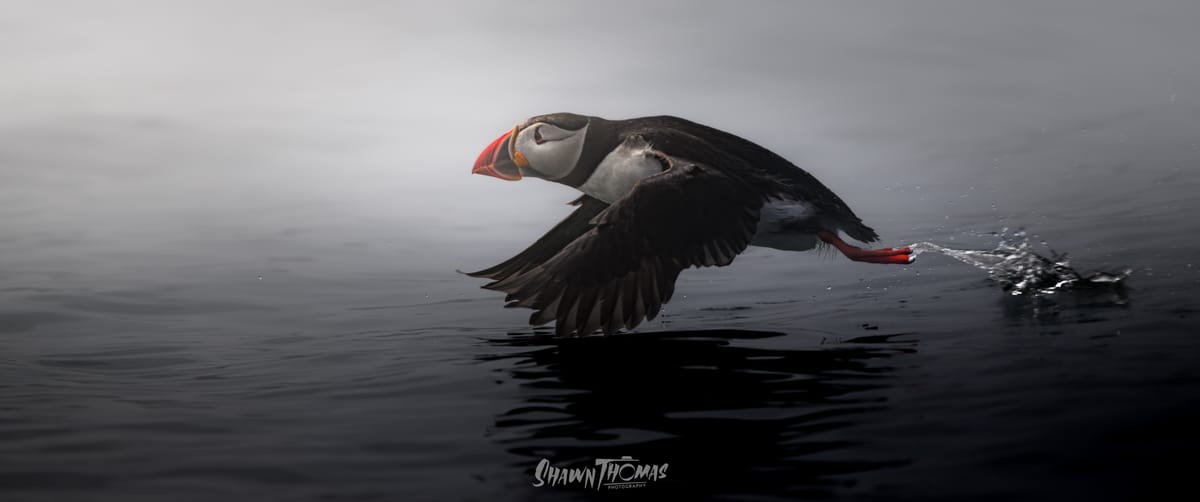
Six Months in the Making
Six months earlier, I’d booked the tickets — a once‑in‑a‑lifetime trip I’d been dreaming about for a while. My family and I would take a birder’s road trip up the East Coast, stopping at some famous wildlife and photography destinations. We’d wander the trails at Sapsucker Woods in Ithaca, detour through Salem, Massachusetts (because witches), and then head to the tiny fishing town of Cutler, Maine — the launch point for my ultimate goal: photographing puffins on Machias Seal Island.
The plan was perfect. After the puffin trip, we’d wrap it all up with a few days exploring Acadia National Park. But for me, everything hinged on that one boat ride out to the island — the moment where months of anticipation, research, and hope would finally meet reality. I'd bought customized lenses, watched every video available, I was determined for this to be a once in a lifetime trip.
When the day arrived, conditions looked promising. A cool breeze drifted over still water, and a delicate fog softened the horizon. Shortly before arriving at the island, a lone puffin floated into view, framed by endless blue. I snapped my first photo of the day, already imagining it as the opener to a perfect puffin story.
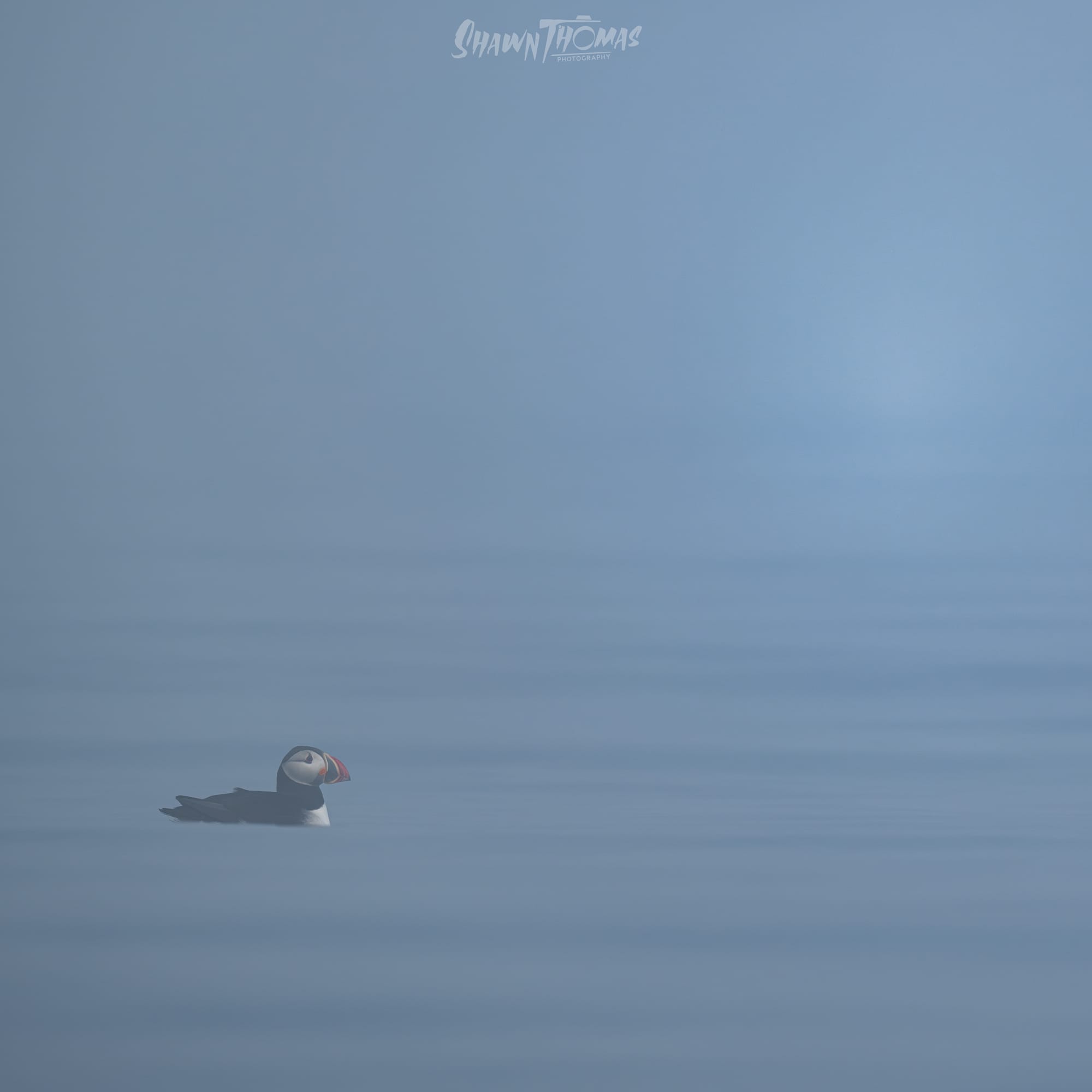
When the Dream Shot Fades
At first, that soft fog felt like a gift — the kind of dreamy, cinematic light that makes wildlife photography sing. Every ripple on the water was muted, every bird’s silhouette wrapped in atmosphere. I thought I’d hit the jackpot.
But as the boat pushed farther out into open water, the fog thickened. That gentle softness turned to a flat, gray wall, and the visibility dropped fast. My visions of vibrant puffin portraits on rocky ledges started to fade.
Still, I told myself, No problem — we’ll land on the island, work the conditions, and make it happen. Except, when we reached Machias Seal Island, the verdict came down: no landing today. The fog was too dense, and safety rules were absolute.
I felt my heart sink. Six months of planning and this was the moment? Stuck on the boat, watching the island disappear into the mist? The puffins were still there — somewhere — but the dream shot I’d pictured was evaporating right in front of me.
Instead, we were confined to the boat, floating slow circles around the island in the heavy mist. You could hear the puffins chattering, see them streaking low over the water, but that sense of being in their world was gone. And as much as I was processing my own disappointment, I also had a nine‑year‑old daughter in tears beside me because she couldn’t set foot on the island. I kept smiling, pointing out every bird I could, trying to make sure she still felt the magic — reminding her, and myself, that we were still here, still with puffins, even if it wasn’t the way we imagined.
Consolation Shots from the Fog
The island was off limits, the fog wasn’t lifting, and I wasn’t about to head home without at least a handful of puffin photos. So I did what any stubborn wildlife photographer would do — I worked with what I had.
Leaning over the rail, I tracked puffins as they zipped past the boat or bobbed in the gray water. Shooting at a 45‑degree angle down into the water is one of my least favorite things in the world — it flattens perspective, robs the scene of drama, and makes the background a messy, featureless gray. The light was flat, the contrast minimal, and the wind kept rocking us just enough to make clean shots tricky. But I kept going, firing bursts when a bird broke the surface or took flight.
By the time we were back on shore, I was running on adrenaline and frustration. In the hotel that night, I loaded the files and made a few quick edits — just enough to convince myself the trip hadn’t been for nothing. The images were fine, maybe even decent, but they didn’t excite me. I posted a couple anyway, mostly to say I went, I tried. Deep down, though, I knew these weren’t the shots I’d been dreaming about.
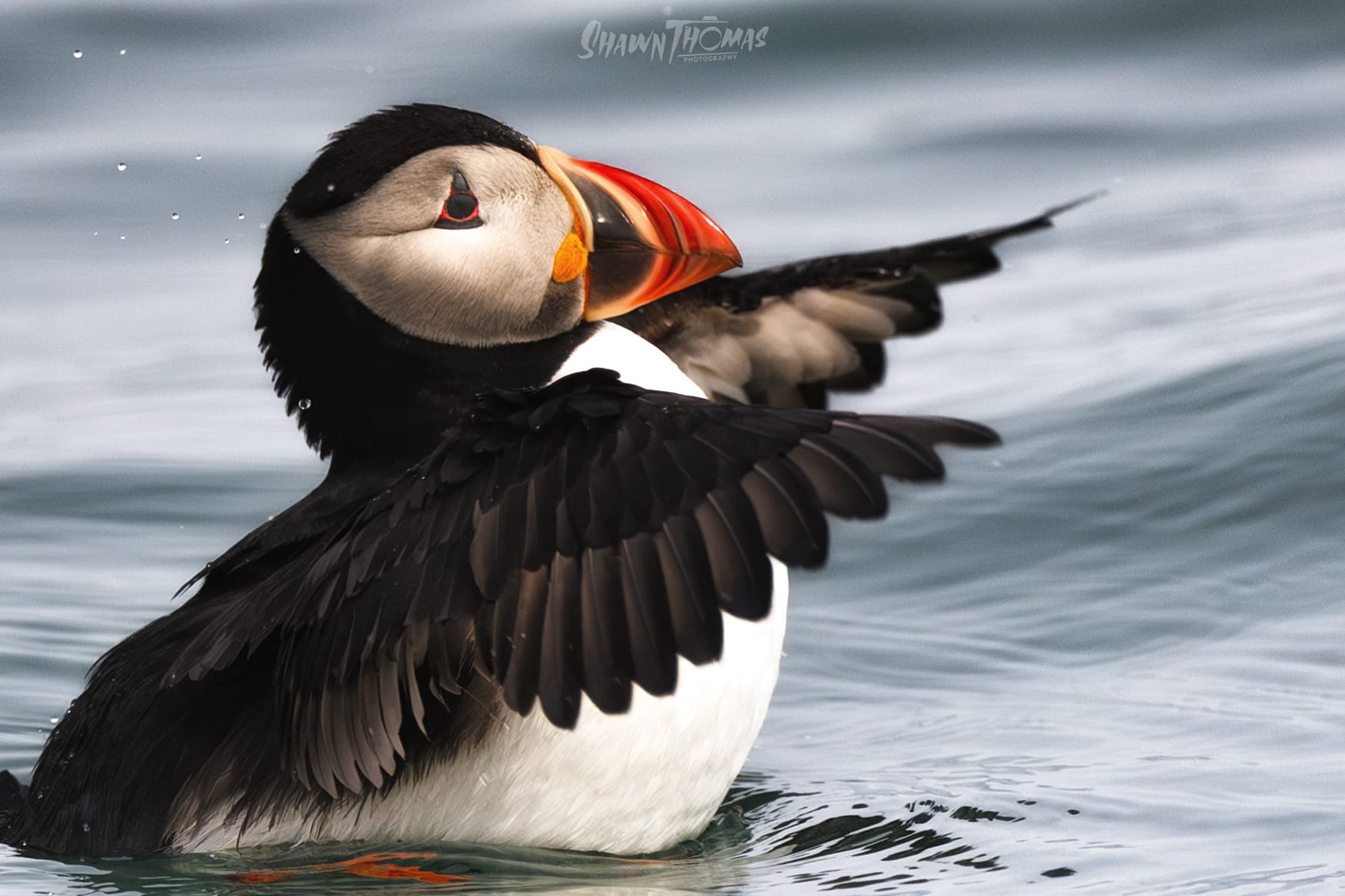
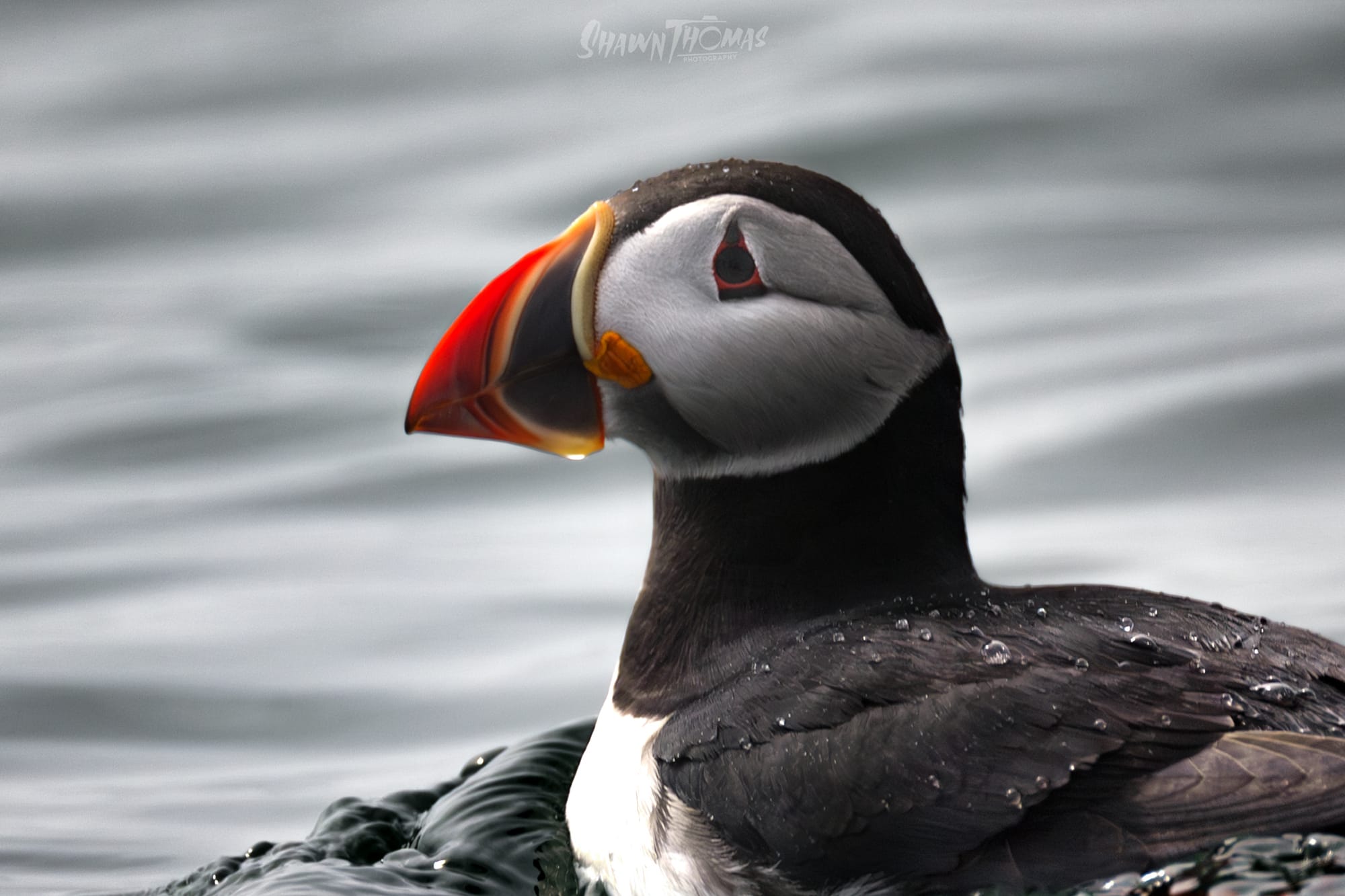
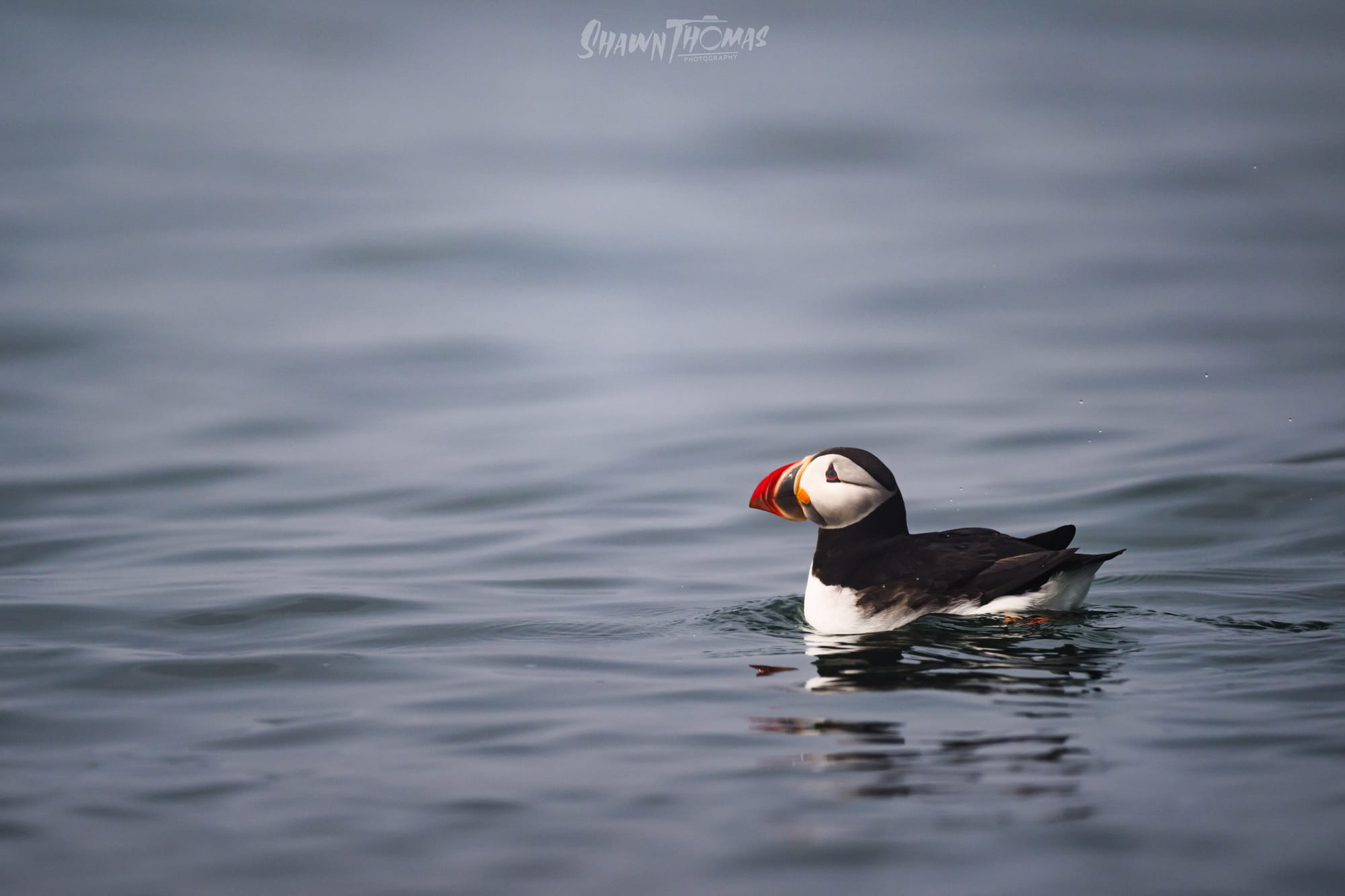
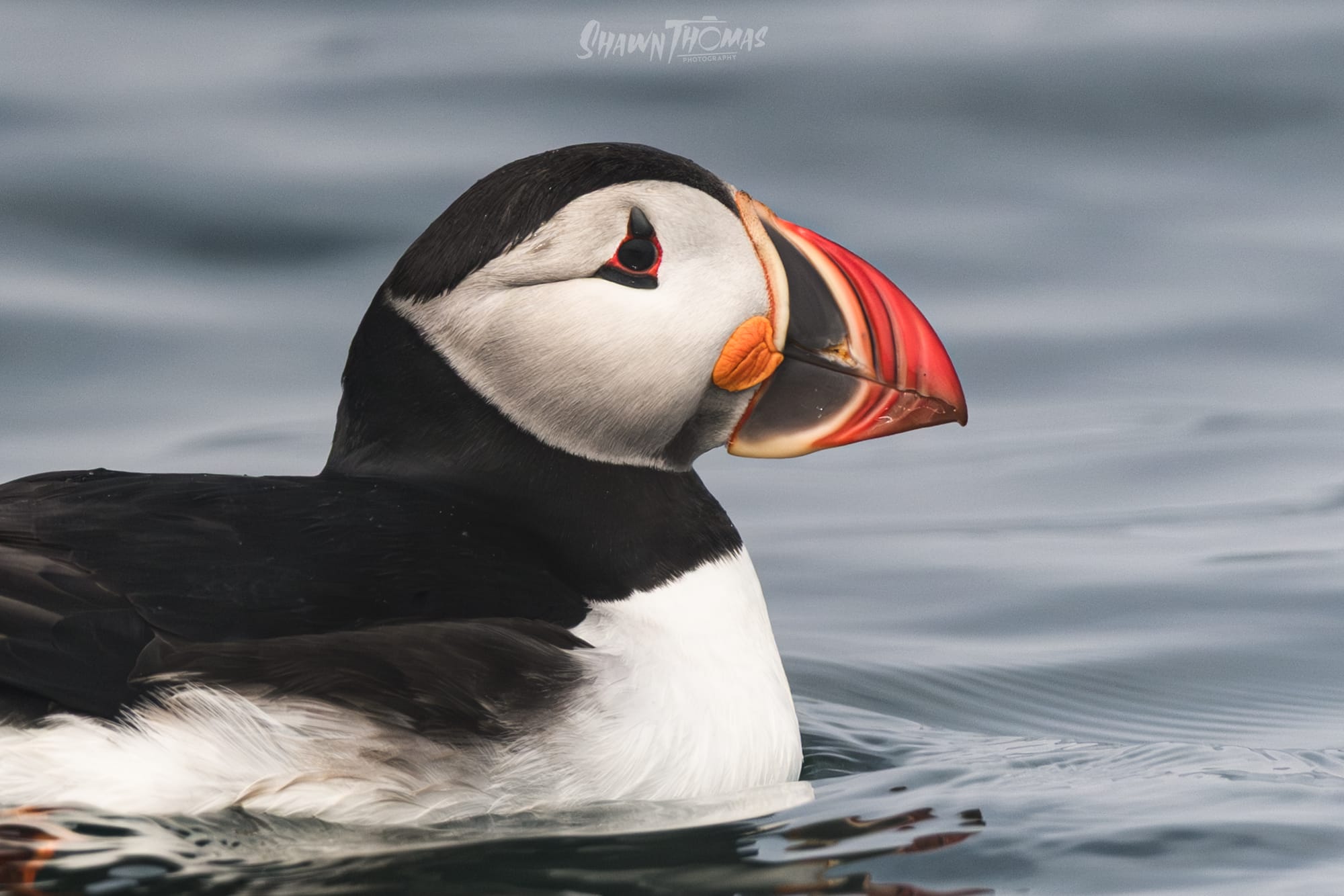
The Long Pause & The Game-Changer
After that first night, I didn’t touch the puffin photos again — and that was intentional. I forced myself to stay away from them until I could decouple the emotions of frustration and disappointment from what was actually in the frames. I didn’t want my mood on that fog‑soaked day to cloud my judgment about the images themselves.
For about a month, they sat untouched. Then one afternoon, I decided it was time. I opened the folder with no expectations, just curiosity. And then I found it — the shot. A puffin cutting through the mist, the fog wrapping around it like a stage curtain, the mood thick and magnetic.
This was different. It wasn’t the bright, clean, perfectly lit puffin portrait I had imagined for six months. It was better. It was a story. It felt like the entire day distilled into one frame — challenging, imperfect, but full of character.
I leaned into the mood in the edit. I built a faint horizon line and subtly darkened the water under the puffin, giving it more depth and anchoring the scene. I enhanced the fog in the background rather than fighting it, letting it become part of the image’s personality. Using what little natural light I had, I pulled out the highlights on the puffin’s face and beak to create a natural point of focus.
In total, I used nine separate masks for micro‑edits — tiny adjustments to texture, contrast, and tone that together gave the image a reflective, almost contemplative quality. Maybe I even poured a little of my own frustration into it, shaping the frame to feel like the day itself: quiet, stubborn, and unwilling to give up entirely.
The next two images show the before and after — the raw frame I rediscovered, and what it became once I was ready to see it for what it really was.
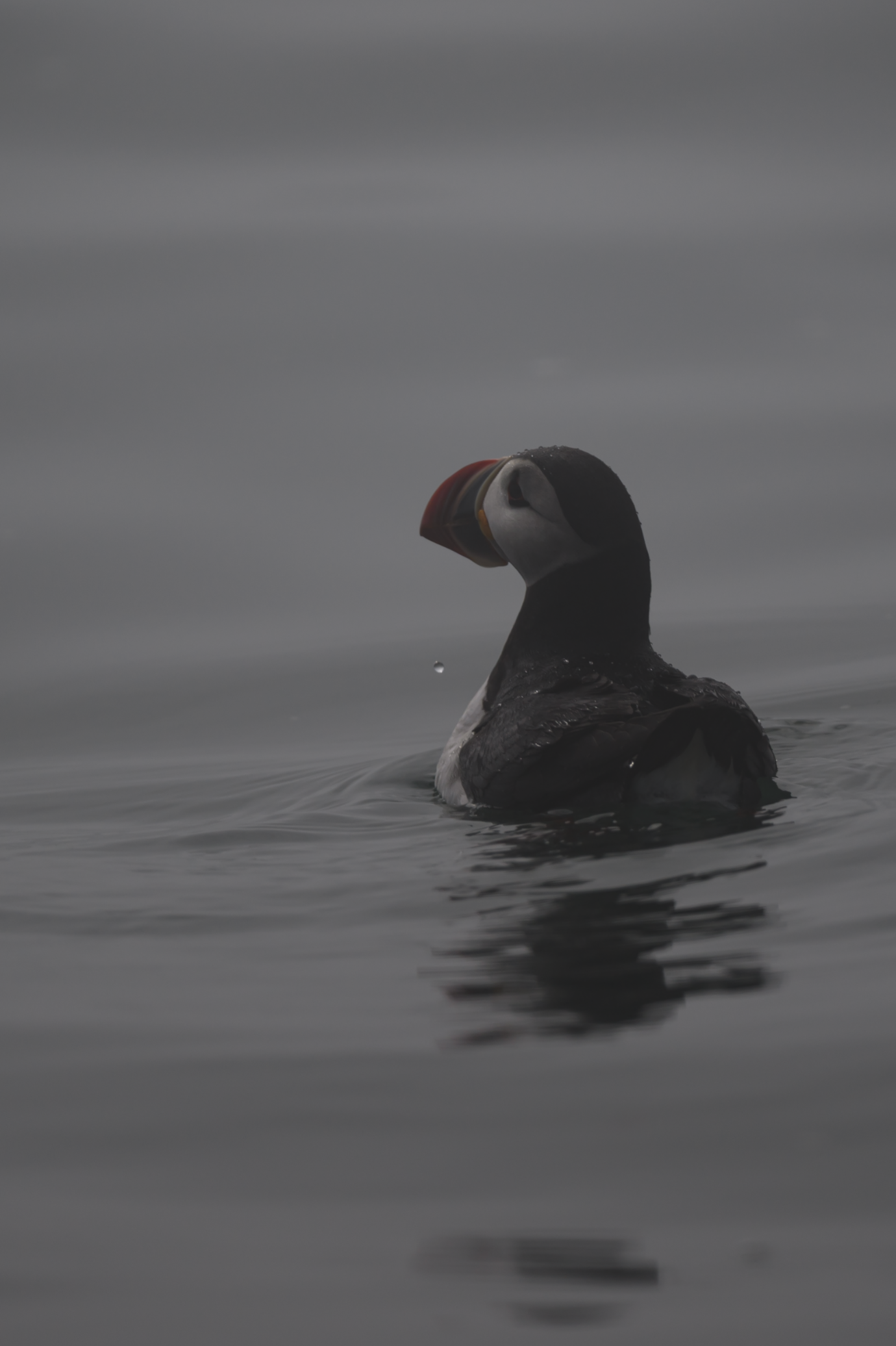
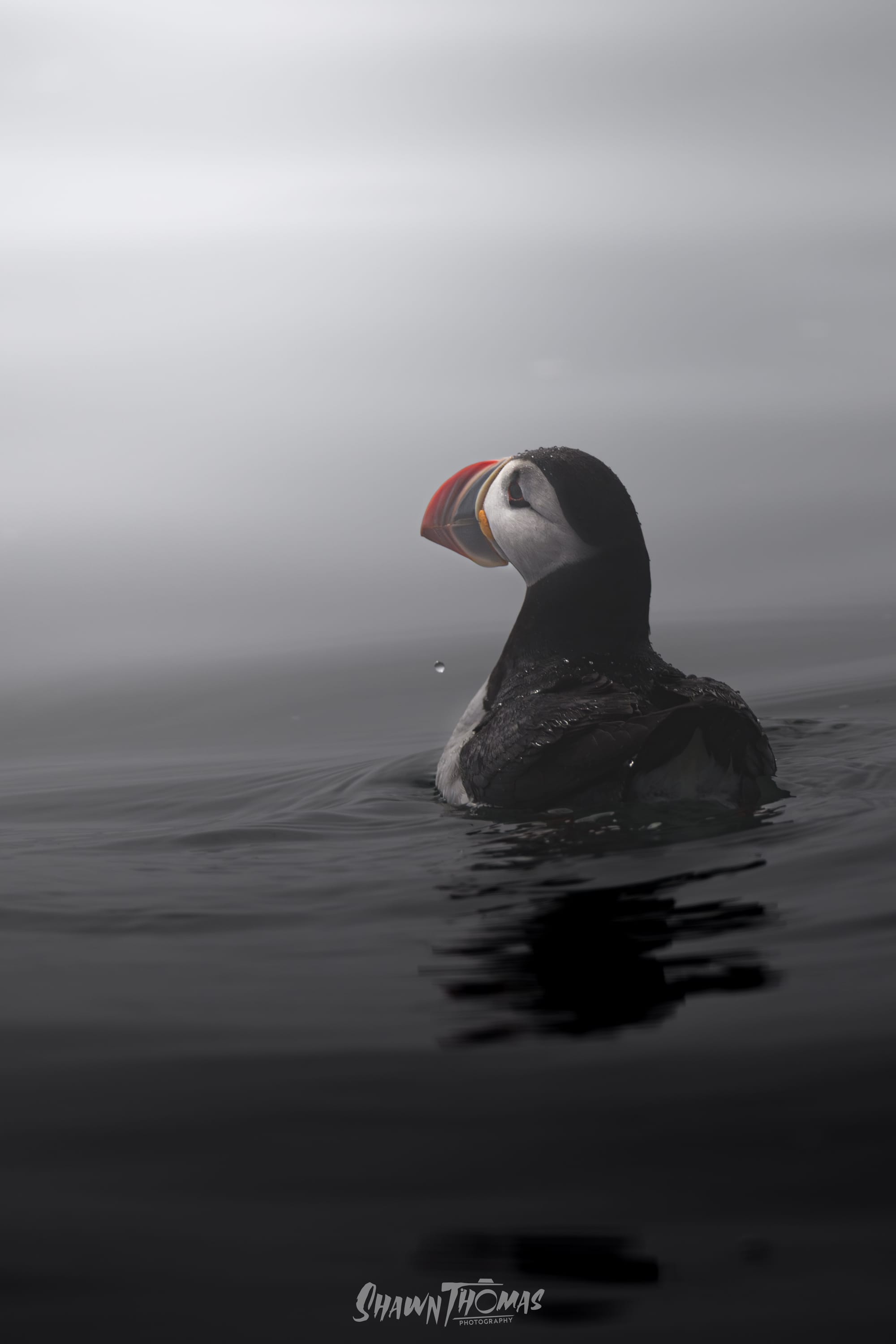
When the Tide Turns
That moody puffin shot quickly became one of my favorite images I’ve ever made — and, to my surprise, one of my most well‑received. I shared it online and the response was immediate. Friends, fellow photographers, even strangers reached out to say how much they loved the atmosphere and feeling in the frame. Simon D’Entremont, one of the best wildlife photographers in the business, even left a comment on it.
It was validating — not just because other people liked the image, but because it came from a day I had mentally written off as a failure. That kind of turnaround is rare in photography.
And riding that high, I decided to comb back through the rest of my puffin shots. That’s when I stumbled onto what’s now the cover image for this blog — a frame I hadn’t even considered worth pulling off the memory card at the time. It was just sitting there, overlooked and forgotten.
This time, I was looking for different things — subtle highlights along the puffin’s feathers, a little light to play with, and the way those details worked together to give the bird a quiet presence in the frame. I noticed how the water patterns complemented the pose, and how the light, even in the fog, helped tell a calmer, more reflective story. I was searching for mood, for quiet personality, for the way an image feels more than how it looks. And once I saw it, I knew it deserved its place here.
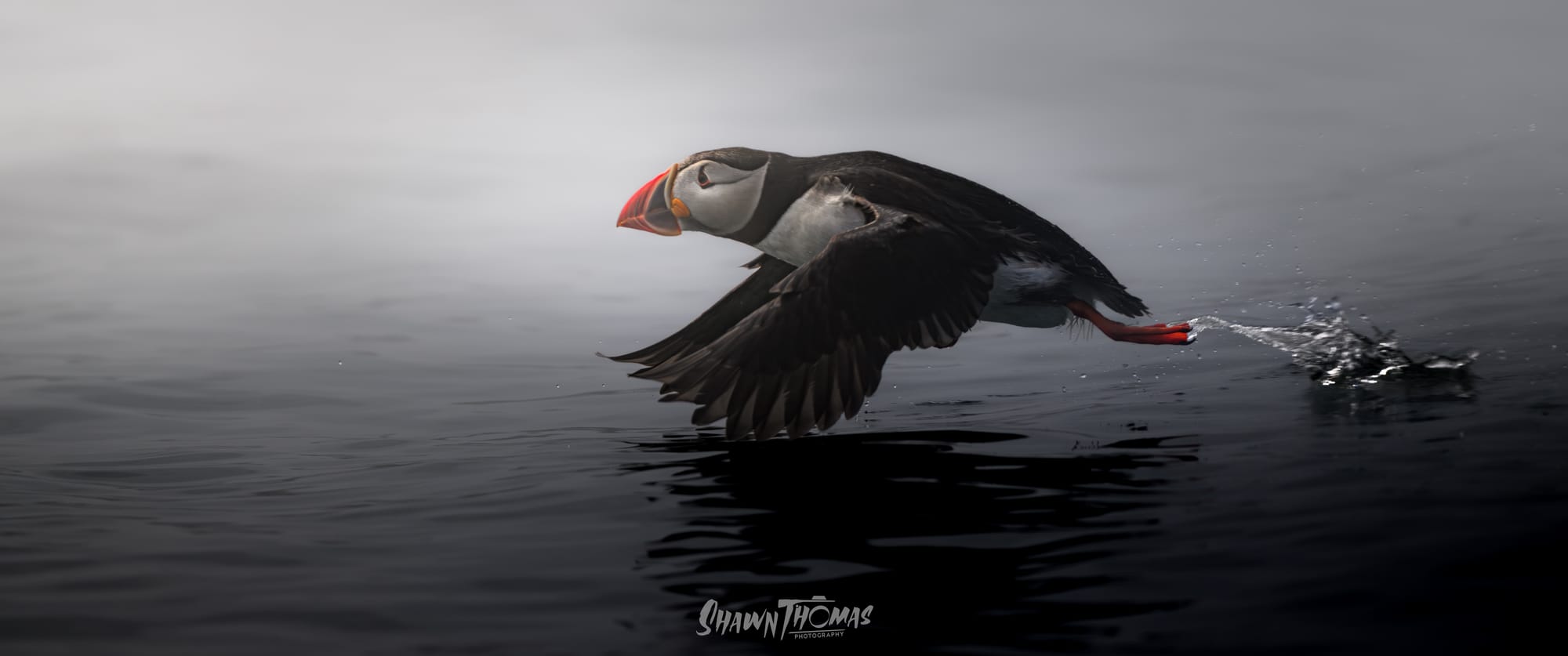
Lessons from the Fog
If this trip taught me anything, it’s that photography isn’t just about chasing the images you’ve been picturing for months — it’s about being open to the ones you don’t expect. The weather, the light, the circumstances… they’ll rarely match the perfect scenario in your head. But that doesn’t mean the day is a loss.
The best shots from this trip weren’t the ones I had in mind when I booked the tickets. They were the ones I had to work for in less‑than‑ideal conditions, the ones that made me rethink what success looks like. And honestly, I’m not even sure I’m done going through the puffin images yet. Now that I know what to look for — the interplay of movement and mood, the details in the light, the emotion in a pose — I might find even more worth sharing.
The fog didn’t give me the puffin shoot I planned for, but it gave me something just as valuable: a reminder to adapt, to slow down, and to see beyond the checklist in my head. Sometimes the image you’re most proud of is the one you almost left behind.
If there’s one thing I’d pass on from this trip, it’s this: don’t judge your images too soon. The emotions you feel in the moment — excitement, disappointment, frustration — can cloud your ability to see what’s really there. Give your work some breathing room. Come back later with fresh eyes, and look for the quiet details and the unexpected moods you might have missed. Sometimes the images you value most will be the ones you didn’t even notice at first.
Want to see more of my work?
You can explore my full portfolio — from wildlife and landscapes to my ongoing photography adventures — over on my website:
